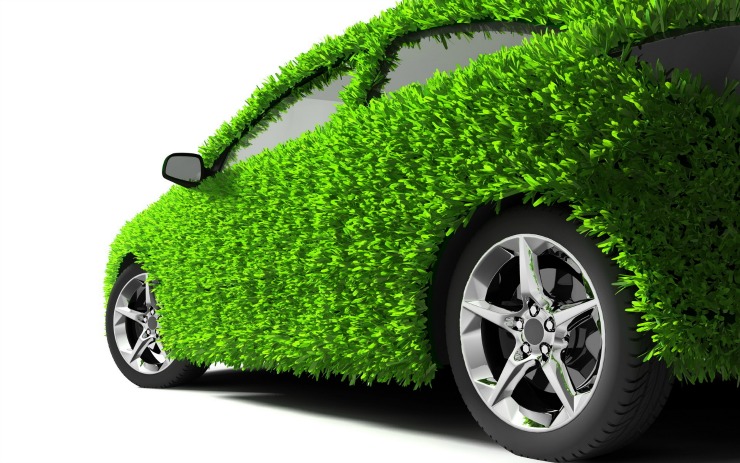Choosing a sustainable car is not as easy as it sounds. It all depends on how you define sustainability. A new European program, Green NCAP, compares common brands of cars for their lifetime environmental impact. It looks at the best and worst cases, with some surprising results.
The Green NCAP program
The global push towards electric vehicles (EVs) might suggest they are the only sustainable choice today.
It’s true EVs have many advantages. They have no greenhouse gas emissions, don’t use petrol or diesel, run quietly and need little servicing. Even so, an EV is often compared with the conventional version using the best case possible, eg, running on renewable electricity.
A new program, Green NCAP, is an offshoot of the European New Car Assessment Programme.
In 2019-21, Green NCAP tested 61 recent cars of all sizes and powertrains, assuming a lifetime of 16 years and total mileage of 240,000 kms. It tested EVs using the European average mix of nuclear, renewable, and coal fired electricity. Moreover, it looked at best and worst cases over the lifetime of each vehicle.
Green NCAP uses two main measures:
Life cycle assessment (LCA) – environmental impact over the car’s lifetime
Primary energy demand (PED) – all primary energy car uses in its lifetime, including coal, oil, natural gas, hydro energy, wind, waste, solar and nuclear energy.
Surprising findings about what is sustainable
Green NCAP made a few, perhaps surprising, discoveries:
- EVs perform the best overall under the lifecycle assessment, especially when components are recycled.
- EV emissions are close to some regular cars when adding estimated greenhouse gases released to supply electricity over its lifetime.
- A conventional diesel vehicle, the Škoda Octavia, had the lowest primary energy demand of all those studied. Diesel vehicles use less fuel than petrol vehicles, creating a slight advantage.
- The impact of vehicle mass and size is considerable for all vehicle types. Compact and mid-size EVs have slightly fewer emissions than conventional cars, but big and powerful EVs have similar emissions to diesel or petrol cars.
- How cars are driven – relaxed or sporty – makes a difference and so does the ambient temperature. At -7°C the EV consumes more than twice the energy than it does in the best case.
- For plug-in hybrids, emissions depend very much on driving style, weather conditions and having the battery fully charged. Compressed Natural Gas and plug-in hybrids have similar life cycle results.
- In Poland, with the most coal-produced electricity, EVs have become significantly worse than combustion engine cars.
These results suggest there is no simple answer to what is a sustainable car. It depends on the vehicle itself, the driver, and how electricity is supplied in their country.
Emissions in Australia
Australia uses mostly coal-produced electricity. So it’s even more important to consider lifetime emissions and energy demand when comparing EVs and regular vehicles.
SUVs and light commercials made up 80% of new sales in October 2022. They make up 77% of the new car market so far in 2022. During 2021, utes, vans and 4WDs made up nearly one third of new vehicle sales.
According to FCAI, this third of new cars created nearly two thirds of Australia’s car emissions.
FCAI created voluntary CO2 Emissions Standards for the automotive industry in the absence of any from the federal government. Passenger cars were given one target and light commercials had a higher target. During 2020 both categories clearly missed their targets.
During 2021, average emissions for:
- Passenger cars and small-to-medium SUVs were 2.4% below the 2021 target.
- New utes, vans, and large 4WDs were 10% higher than the target.
The biggest polluters were Ram, Chevrolet, LDV, Great Wall Motors and Jeep 4WDs, not to mention Lamborghinis and Ferraris. Given the Australian preference for bigger and bigger vehicles, it’s hard to see how carmakers can easily meet these voluntary targets.
Some commentators believe the only way to stop escalating emissions is to ban petrol and diesel vehicles altogether. Countries like the UK already have future bans in place. But even driving sustainable EVs could have minimal impact on demand for oil.
Will EVs stop the oil industry?
It appears driving EVs does not reduce oil use by much. From 2017 to 2020, the number of EVs in Norway more than doubled yet oil consumption fell by just over 2%. Even though 90% of new car sales are EVs, oil consumption has fallen by only 6% since 2009.
Fuel retailing is a $40 billion industry in Australia. In 2021, we used 15,500 megalitres of petrol and twice as much diesel – 30,946 megalitres. However, the automotive industry is not the only user of oil. One very heavy user of oil is the plastics industry.
This brings us back to where we started. It’s not easy to choose a car based on how environmentally friendly it is. The chances are many other products you buy are derived from fossil fuels. There is so much to consider and some might think it’s all just too hard.


your opinion matters: